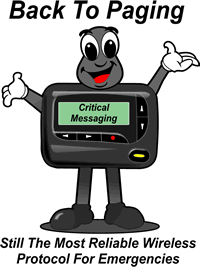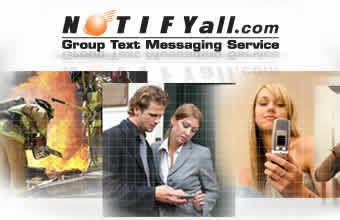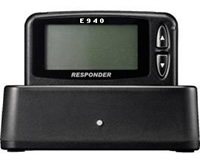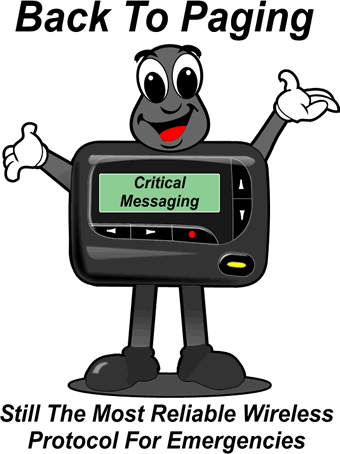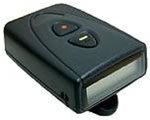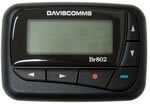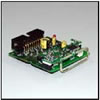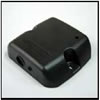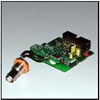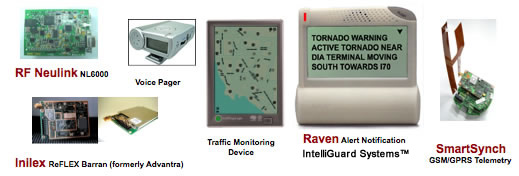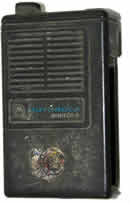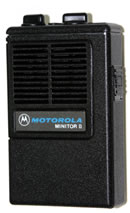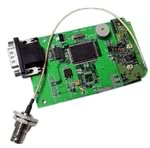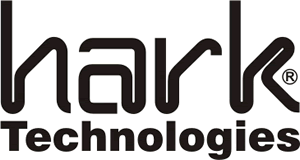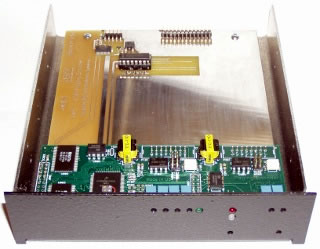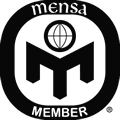BloostonLaw Telecom Update Published by the Law Offices of Blooston, Mordkofsky, Dickens, Duffy & Prendergast, LLP [Portions reproduced here with the firm's permission.] www.bloostonlaw.com |
| Vol. 13, No. 43 | November 3, 2010 |
 FCC Proposal has Licensees moving away from “License Savers” As we have previously reported, the FCC is considering revisions to the rules governing wireless license renewals and “discontinuance of operation” that would be far more strict than those in place. Under the FCC’s proposal, all license renewal applicants would be required to file, as part of their license renewal applications, a far more detailed showing that they have provided “substantial service”. And the FCC is proposing more strict requirements for preventing a lapse of your license due to a “discontinuance of operation”, including a requirement that the licensed station not only have operating transmitters but also have unrelated, paying customers that are actually receiving a usable service. While the details of the new rules will not be known until formally issued, and BloostonLaw has filed comments urging that a reasonable approach be taken to any changes, all indications are that renewal and operating requirements will become more stringent. Licensees who fail to comply with the new rules will be stripped of their licenses, as part of the FCC’s efforts to reclaim unused and under-used spectrum. The rule changes appear to be on a fast track, and a decision could come by the end of the year, with the effective date possibly coming a mere 30 days after Federal Register notice. This has licensees thinking about taking immediate actions to move away from “license saver” buildouts that may barely meet the current rules, but that are likely to fail under the new rules. Certainly, having a single, inexpensive transmitter sending periodic signals to no one is unlikely to meet the new standards. Also, providing substandard service to a just a few customers to “save” the license likely will not be sufficient. So licensees who have not fully developed their wireless operation into a full-blown, usable service that is being offered to the public should start making and implementing plans to do so, if they do not want to get caught in a time crunch to comply with any new criteria that the FCC may adopt. The FCC has made clear that bare license savers will no longer qualify as “providing service.” BloostonLaw contacts: Hal Mordkofsky, John Prendergast, and Bob Jackson. |
 At its final open meeting of the year on December 15, the FCC is likely to consider and initiate separate Notices of Proposed Rulemaking to address: (1) the Connect America Fund (CAF) that will replace existing high-cost support; (2) Intercarrier Compensation reform; and (3) Universal Service Fund (USF) contribution mechanisms. It is possible that one or more of these rulemakings will slip back into 2011, with the most likely candidate being the USF contribution mechanism.  INSIDE THIS ISSUE - FCC Proposal has Licensees moving away from “License Savers”
- Rep. Boucher loses seat, telecom sub-committee leadership position.
- FCC sets comment dates for Mobility Fund NPRM.
- FCC settles with Verizon over “mystery fees.”
- GAO report recommends FCC assess E-rate program internal control structure.
- FCC announces immediate freeze on new LPTV, TV translator applications, and major changes to stations in rural areas.
|
Rep. Boucher Loses Seat, Telecom Subcommittee Leadership Position Rep. Rick Boucher (D-Va.) lost his reelection bid to Virginia State House Republican Leader Morgan Griffith early Tuesday night. Boucher’s defeat also leaves vacant what had been the chairmanship of the Communications, Technology and the Internet Subcommittee. Representative Boucher was from a rural district and had shown sympathy to the rural viewpoint, but his telecom legislation proposals generally included some provisions helpful to rural carriers, and some that were less than helpful. Had Boucher been reelected, he would have been the Ranking Member of that panel in January because the GOP won control of the House Tuesday night. But that won’t be the only change on the subcommittee, according to Politico: Retiring from Congress voluntarily are Democratic Reps. Bart Gordon (Tenn.) and Bart Stupak (Mich.) as well as GOP Reps. John Shadegg (Ariz.), Steve Buyer (Ind.) and George Radanovich (Calif.). Those departures only complement a string of defeats to subcommittee members such as Democratic Reps. Zack Space (Ohio) and Baron Hill (Ind.); out West, Rep. Jerry McNerney (Calif.) was trailing early Wednesday morning. Combined with those leaving the chamber in pursuit of Senate seats – Reps Charlie Melancon (D-La.), who lost, and Roy Blunt (R-Mo.), who won – the total number of subcommittee members leaving the House could be an even dozen. With the Democrat’s loss of the House, Henry Waxman (D-CA) will no longer be Chairman of the House Committee on Energy and Commerce. It is not clear at this time how this will impact Waxman’s ongoing investigation of alleged “traffic pumping” by rural carriers and CLECs. Of possible greater impact on the rural telephone industry, Minority Whip Eric Cantor (R-Va.) has announced that he will seek the Majority Leader position in the new Congress. Cantor is quoted as saying “I believe that we must change the culture of spending that has prevailed for far too long.” BloostonLaw contacts: Hal Mordkofsky, Ben Dickens, Gerry Duffy, and John Prendergast. FCC Sets Comment Dates For Mobility Fund NPRM The FCC has set comment dates for its Notice of Proposed Rulemaking (NPRM) to use a reverse auction to distribute one-time support from a newly created Mobility Fund to encourage construction of Third Generation (3G) mobile voice and data facilities in areas currently lacking 3G service (BloostonLaw Telecom Update, October 20). Comments in this WT Docket No. 10-208 proceeding are due December 16, and replies are due January 18, 2011. The proposed Mobility Fund could prove to be a relatively short-lived transitional mechanism to distribute predominately wireless competitive eligible communications carrier (CETC) support ceded by Verizon and Sprint in order to obtain FCC consent to their respective recent mergers with ALLTEL and Clearwire. However, the proceeding raises several issues that are likely to have critical impacts upon small wireline and wireless carriers. First, it proposes using reverse auctions for the first time as a device to distribute universal service support. Once adopted for the Mobility Fund, reverse auctions would become a (if not the) leading candidate for the distribution mechanism that will be used to distribute Connect America Fund (CAF) support for broadband facilities and operations to wireline and wireless carriers. The seriousness of the FCC’s interest and intentions with respect to reverse auctions is highlighted by its release on October 29 of a Staff Working Paper praising the alleged efficiency and success of reverse auctions to distribute support for rural public telephones and wireless broadband networks in Chile and India (see related story in this Update). Second, the manner in which the proposed Mobility Fund reverse auction procedures permit bidders to define their own “unserved areas” and to compete according to “lowest per-unit bids” confer overwhelming advantages upon carriers that can make bulk purchases of equipment at lower per-unit prices and that can otherwise recognize substantial economies of scale. In other words, in addition to the gaming and service quality issues with respect to reverse auctions in general, the proposed Mobility Fund auction procedures seem designed (whether intentionally or as an unintended consequence) to enable Verizon Wireless and AT&T Wireless and other larger national and regional carriers to win reverse auctions for all of the unserved 3G areas that they desire. Third, the proposed Mobility Fund reverse auction procedures do not distinguish between 3G technologies that can be upgraded to 4G and those that cannot. If significant numbers of reverse auction winners deploy 3G networks and facilities that cannot be upgraded to 4G, the affected rural service areas may be condemned to 3G service for years in a 4G world, or their 3G networks will have to be discarded and replaced by 4G networks at a substantial additional and avoidable cost to the universal service program. Finally, the proposed Mobility Fund rules entail unanswered questions regarding the roles and responsibilities of the states. BloostonLaw will be preparing comments in this proceeding for interested clients. BloostonLaw contacts: Hal Mordkofsky, Ben Dickens, Gerry Duffy, and John Prendergast. FCC Settles With Verizon Over “Mystery Fees” The FCC’s Enforcement Bureau has announced a consent decree with Verizon Wireless — including a record $25 million payment to the U.S. Treasury — regarding “mystery fees” the company charged its customers over the last several years (BloostonLaw Telecom Update, October 6). The payment is the largest in FCC history and the settlement concludes the agency’s 10-month investigation into these overcharges. In addition to Verizon Wireless’ payment to the Treasury, the company will immediately refund a minimum of $52.8 million to approximately 15 million customers and ensure that consumers are no longer charged the mystery fees. The Enforcement Bureau began investigating Verizon Wireless in January 2010 after large numbers of consumer complaints and press reports about unexplained data charges. The investigation focused on “pay-as-you-go” data fees — charges of $1.99 per megabyte that apply to Verizon Wireless customers who do not subscribe to a data package or plan. The investigation found that approximately 15 million “pay-as-you-go” customers may have been overcharged for data usage over the course of three years, from November 2007 to the present. According to the settlement, the erroneous mystery fees from Verizon Wireless were caused by: - unauthorized data transfers initiated automatically by applications (like games) built into certain phones;
- accessing certain web links that were designated as free-of-charge (e.g., the Verizon Wireless Mobile Web homepage);
- unsuccessful attempts to access data when there was insufficient network coverage to complete the requested data transfer; and
- unwanted data transfers initiated by third parties and affecting customers who had content filters installed on their phones.
To ensure that all affected consumers are repaid and the mystery fee issue is resolved, Verizon Wireless has agreed to key consumer protection measures, including: No more mystery fees: Verizon Wireless must cease charging customers the incorrect fees. In addition, the company has agreed to take affirmative steps to prevent future unauthorized data charges. Immediate repayment of 15 million customers: Customers who have been identified by Verizon Wireless as being potentially overcharged for data usage will receive refunds or credits on their October or November bills. Right to appeal: Verizon Wireless’s repayment obligations are not capped at the estimated $52.8 million in refunds identified by the company. Customers who do not receive a refund but believe they had unauthorized data charges have a right to appeal, receive a good-faith review, and reach resolution within 30 days. Verizon Wireless is required to disclose any unresolved complaints to the FCC. Commitment to offer data blocks on request: Verizon Wireless must offer data blocks to any customer who seeks to avoid data charges on his or her bill. Improved customer service: Verizon Wireless must launch several new customer service initiatives to provide more information and more options to consumers. These include: - Plain-language explanations of “pay as you go” data charges and data plans, and the available tools to reduce those charges;
- An online video tutorial to help consumers understand their bills; and
- Enhanced training on pay-as-you-go data charges to Verizon Wireless’s customer service representatives who interface directly with consumers and respond to consumer questions or complaints.
Data Charge Task Force: Verizon Wireless must create a Data Charge Task Force, staffed by specially trained customer service experts who will monitor and resolve data charge complaints and other data charge-related issues going forward. The Task Force will issue regular reports to the FCC so the agency can ensure compliance. Strong accountability and compliance monitoring: Verizon Wireless must submit periodic reports to the FCC on its refund, training, and customer service initiatives (including information on specific complaints) to ensure the company’s compliance going forward. BloostonLaw contacts: Hal Mordkofsky, John Prendergast, Cary Mitchell, and Bob Jackson. GAO Report Recommends FCC Take a Hard Look At E-rate Program Internal Control Structure The Government Accountability Office (GAO) has issued a report, FCC Should Assess the Design of the E-rate Program’s Internal Control Structure, requested by various House committee leaders. The report examines the internal controls the FCC and the Universal Service Administrative Company (USAC) have established and whether the design of E-rate's internal control structure appropriately considers program risks. The GAO report appears to be an indictment of the FCC’s internal control mechanisms and may portend stricter Congressional oversight of the E-rate program, particularly because of the continuing news stories about waste, fraud, and abuse. The GAO suggests that the FCC implement a systematic approach to assess internal controls that consider the results of beneficiary audits, and conduct a robust risk assessment of the E-rate program. More specifically, GAO said the FCC and USAC have established many internal controls for the E-rate program’s core processes: (1) processing applications and making funding commitment decisions, (2) processing invoices requesting reimbursement, and (3) monitoring the effectiveness of internal controls though audits of schools and libraries that receive E-rate funding (beneficiaries). E-rate’s internal control structure centers on USAC’s complex, multi-layered application review process. USAC has expanded the program’s internal control structure over time to address the program’s complexity and to address risks as they become apparent. In addition, USAC has contracted with independent public accountants to audit beneficiaries to identify and report beneficiary noncompliance with program rules. The design of E-rate’s internal control structure may not appropriately consider program risks. GAO found, for example, that USAC’s application review process incorporates a number of different types and levels of reviews, but that it was not clear whether this design was effectively and efficiently targeting resources to risks. Similarly, GAO found no controls in place to periodically check the accuracy of USAC’s automated invoice review process, again making it unclear whether resources are appropriately aligned with risks. While USAC has expanded and adjusted its internal control procedures, it has never conducted a robust risk assessment of the E-rate program’s core processes, although it has conducted risk assessments for other purposes, such as financial reporting. GAO believes that a risk assessment involving a critical examination of the entire E-rate program could help determine whether modifications to business practices and the internal control structure are needed. The internal control structure should then be periodically monitored to ensure that it does not slide back toward a failure to adequately monitor risk. The results of beneficiary audits are used to identify and report on E-rate compliance issues, but GAO found that the information gathered from the audits has not been effectively used to assess and modify the E-rate program’s internal controls. As a result, the same rule violations have been repeated each year. For example, of 64 beneficiaries that had been audited more than once over a 3-year period, GAO found that 36 had repeat audit findings of the same rule violation. GAO found that the current beneficiary audit process lacks documented and approved policies and procedures. Without such policies and procedures, management may not have the assurance that control activities are appropriate and properly applied. Documented and approved policies and procedures could contribute positively to a systematic process for considering beneficiary audit findings when assessing the E-rate program’s internal controls and in identifying opportunities to modify existing controls. BloostonLaw contacts: Ben Dickens, Gerry Duffy, and Mary Sisak. FCC ANNOUNCES IMMEDIATE FREEZE ON NEW LPTV, TV TRANSLATOR APPLICATIONS, AND MAJOR CHANGES TO STATIONS IN RURAL AREAS: The FCC last week announced an immediate freeze on the filing of applications for new digital low power television (LPTV) and TV translator stations and major changes to existing analog and digital LPTV and TV translator facilities in so-called “rural areas.” This freeze expands a partial restriction that prevented new LPTV applications for the 700 MHz spectrum purchased at auction by many of our wireless carrier clients. On August 25, 2009, the Media Bureau began accepting applications on a first-come, first-served basis for new digital LPTV and TV translator stations and for major changes to existing analog and digital LPTV and TV translator facilities in so-called “rural areas.” Applications have been accepted since that date. However, applicants were precluded from requesting facilities outside of the “core” TV channels (i.e., Channels 2-51). Subsequent to the Media Bureau beginning to accept LPTV and TV translator applications in rural areas, the National Broadband Plan was released. The Broadband Plan announced an effort to identify 500 megahertz of spectrum that can be reallocated from existing uses to enable the expansion of new mobile broadband service. To aid in this endeavor, the Broadband Plan recommended, among other things, that the Commission initiate a rule-making proceeding to reallocate 120 megahertz from the broadcast television bands, and also to consider methodologies for repacking full-power television channels to increase the efficiency of channel use. To permit the Commission to evaluate its reallocation and repacking proposals and their impact on future licensing of low power television facilities, the Media Bureau deems it appropriate to freeze the acceptance of additional applications for new digital LPTV and TV translator facilities, as well as applications for major changes to existing analog and digital LPTV and TV translator facilities, in rural areas. Furthermore, the Media Bureau has been accepting these applications since August 25, 2009, and believes that those parties interested in seeking to construct new digital low power television facilities in rural areas have had sufficient time to submit their applications. Following the conclusion of the Commission’s broadband rulemaking proceedings, the Media Bureau will consider an appropriate date to once again begin accepting these applications. Applications that are currently permitted under FCC rules, such as applications for flash cut and digital companion channels filed by existing stations in the low power television service, will continue to be accepted. Furthermore, displacement applications will continue to be accepted where the applicant demonstrates actual interference from existing full-power television stations, as well as displacement applications filed by stations operating on channels 52 through 69. This will be beneficial to LPTV/TV licensees that are displaced by wireless operations being implemented in the 700 MHz band by recent auction winners and public safety entities. BloostonLaw contacts: Hal Mordkofsky, John Prendergast, and Richard Rubino. FCC ESTABLISHES COMMENT CYCLE FOR E911 LOCATION ACCURACY PROCEEDING: The FCC has established a comment cycle on its Further Notice of Proposed Rulemaking (FNPRM) and Notice of Inquiry (NOI) on wireless emergency 911 and E911 location accuracy requirements regarding both wireless and Internet Protocol (IP)-enabled service providers (BloostonLaw Telecom Update, September 29). Comments in this PS Docket No. 07-114 and WC Docket No. 05-196 proceeding are due January 3, and replies are due January 31. The item seeks comment on improving the Commission's existing Enhanced 911 (E911) rules to further improve the location capability of 911 and E911 services for existing and new voice communications technologies, including new broadband technologies associated with deployment of Next Generation 911 (NG911) networks. The FNPRM seeks public comment on a number of issues, including whether the FCC should adopt a technologically neutral location accuracy standard, methodologies for verifying compliance, and how wireless 911 caller location accuracy can be improved in challenging environments, such as in high-rise buildings, urban canyons and mountainous and forested terrain. The NOI seeks public comment on whether to require interconnected Voice over Internet Protocol (VoIP) service providers to automatically identify the caller’s location, rather than requiring the caller to self-report his or her location, and whether other forms of VoIP services should be subject to the 911 rules. The NOI also focuses on the potential impact of future NG 911 deployment on location accuracy and automatic location identification. Additionally, the NOI explores whether to extend 911 and E911 requirements to new and emerging voice communications services, devices, and application enabled by broadband technologies. BloostonLaw contacts: Hal Mordkofsky, Ben Dickens, Gerry Duffy, and John Prendergast. FCC SETS COMMENT DATES FOR INTERNET-BASED TRS: The FCC has set comment dates for its Notice of Proposed Rulemaking (NPRM) regarding the assignment of telephone numbers associated with Internet-based Telecommunications Relay Service (iTRS), specifically, Video Relay Service (VRS) and IP Relay. Comments in this WC Docket No. 10-191 proceeding are due December 2, and replies are due December 17. In the NPRM, the Commission seeks comment on steps the Commission should take to improve toll free access for Internet-based iTRS. Specifically, as a continuation of the Commission's ten-digit numbering plan for iTRS, it propose rules, and seeks comment, to ensure that toll free numbers are as available, and used, by deaf and hard-of-hearing users as they are for hearing users. For example, the Commission seeks comment on ways to ensure that iTRS users in most cases use a local number as the primary telephone number. The Commission seeks comment on prohibiting iTRS providers from assigning new toll free numbers to users. The Commission also seeks comment on methods for an iTRS provider to assist an iTRS user in the process of transferring his or her assigned toll free number to a subscription with a toll free service provider. The Commission seeks comment on a proposal that a deaf or hard-of-hearing iTRS user that obtains a toll free number from, or ports a toll free number to, a toll free service provider that has mapped the number to the user's local number in the SMS/800 Database, may also have that toll free number mapped to the user's local number in the iTRS Directory. The Commission seeks comment on a one-year transition period for iTRS users to transfer toll free numbers to a direct subscription with a toll free service provider. The Commission also seeks comment on whether there is any reason not to remove any non-user selected toll free numbers from the iTRS database. The Commission seeks comment on consumer outreach efforts to educate and assist iTRS users with the changes to toll free access. BloostonLaw contacts: Ben Dickens, Gerry Duffy, and Mary Sisak. FCC RELEASES STAFF PAPER ON REVERSE AUCTIONS IN CHILE AND INDIA: As part of its new Office of Strategic Planning (OSP) research program, the FCC has released a staff working paper, “Maximum Impact for Minimum Subsidy: Reverse Auctions for Universal Service in Chile and India.” The author, Irene Wu, Acting Chief Data Officer for the International Bureau, argues that government funding for universal service and broadband support programs could be quicker and more efficient if the FCC were to use reverse auctions (also called “minimum subsidy” auctions). This topic is relevant because the FCC is currently proposing to use reverse auctions for distributing Mobility Fund support for wireless networks in unserved areas (see story on Page 2). Wu explains that reverse auctions have been successful in Chile and India, and they could be a viable option in the U.S. as the FCC adopts measures to reform universal service and rapidly distribute funding for broadband and mobile networks. Wu comments that the U.S. government, the World Bank and OECD have all recommended reverse auctions for telecom networks, and “it seems reasonable that the U.S. government also consider the policy option for itself.” Chile first used reverse auctions for public pay phones in 1994, then community telecenters, and most recently with broadband, fiber optics and mobile networks. Like the U.S., Chile’s goal with universal service is to bring voice and broadband (the target in Chile is 1 Mbps downstream) to unserved and cost prohibitive areas. The Chilean regulator, Subtel, specifically looks for projects with a high social value but where private investment is unlikely. Wu considers Chile’s long history of reverse auctions “well documented, transparent and predictable.” However, there have been some notable challenges, including: inconsistent and unreliable information regarding targeted populations, poor areas within greater communities being overlooked or ineligible for funding, low participation in auctions, and private funding falling through for auction winners. In India during the early 2000s, the telecom regulator (TRAI) was facing considerable negative attention about collecting universal service fees but failing to use the money for connecting rural and remote villages. India decided to use reverse auctions to help close some of the telecom service gaps. Like Chile, India’s first reverse auctions provided support for pay phones in rural villages (in 2003), and the program has since expanded to include basic mobile service. India’s telecom incumbent, BSNL, won the vast majority of India’s reverse auctions, and in some cases BSNL was the only bidder. In a 2007 mobile infrastructure reverse auction, BSNL won 75% but then had the slowest progress in cell tower construction compared to other subsidy winners. Additionally, Wu explains that the Indian regulator has been criticized for its relationship with BSNL, and India’s universal service system “does not sufficiently incorporate the views of the independent regulator, users in rural areas, and other industry members.” Overall, the author identifies some of the underlying challenges of reverse auctions: identifying the right projects to subsidize, mitigating risks (winners backing out, not meeting quality standards, losing private financing), and understanding the impact on competition. Not only is there a concern that reverse auctions can create entry barriers, but “requiring financial guarantees [in order for a bidder to participate] tends to favor established players,” to the detriment of small companies and new entrants. Wu argues that in order for a reverse auction to be successful, it must have clear targets and methods to identify projects, specific minimum and financial bidder qualifications, and a highly transparent process. The FCC also released a staff working paper titled “Transformative Choices: A Review of 70 Years of FCC Decisions” by Sherille Ismail, a Senior Attorney in OSP. The paper presents a historical review of a series of pivotal FCC decisions that helped shape today’s communications landscape. It finds that there have been a number of successful efforts by the FCC, before and after the 1970s, to promote new entrants, especially in the markets for commercial radio, cable television, telephone equipment, and direct broadcast satellites. BloostonLaw contacts: Hal Mordkofsky, Ben Dickens, Gerry Duffy, and John Prendergast.  This newsletter is not intended to provide legal advice. Those interested in more information should contact the firm. |






